Apreciado equipo de C/Pétalos. Hoy quise compartir con esta hermosa y por demás instructiva comunidad, una de mis publicaciones más sentidas y elaboradas con mucho amor. Su título: "Las Flores que acompañan mis pasos" Les confieso que estoy muy enamorada de estos parques y veredas que visito, pues cada día consigo una flor en mi camino, diferente de otras. Además, hasta hoy, todas son espectaculares. Parece que siempre están listas para cuando alguien las va a fotografiar. ¡Qué coquetas! ¿Verdad?...
La imagen que elegí para mi portada, la quise hacer resaltar entre todas, aunque es muy conocida, pero siento que debo darle un lugar preponderante, por su incomparable belleza. Es la que normalmente llamamos en mi país, Yerbera. SU nombre científico y demás detalles, los explicaré más adelante.
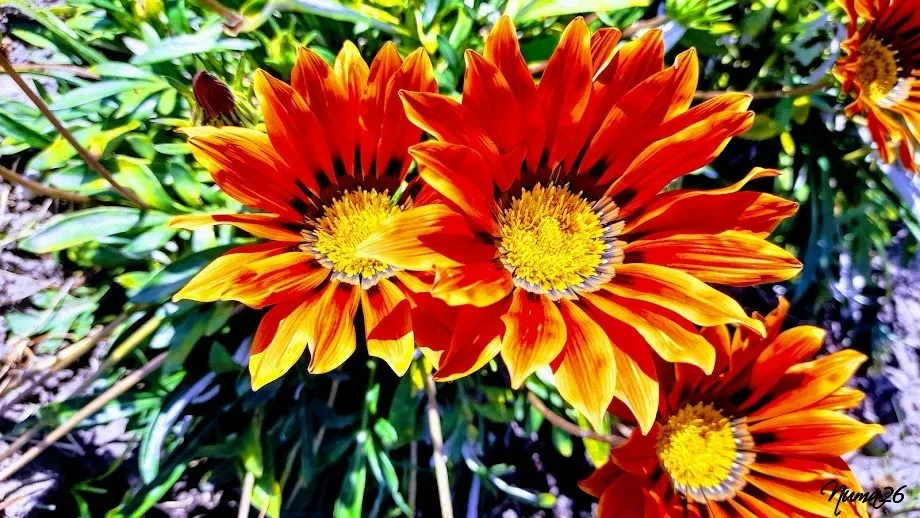
Dear [C/Petals] team (created/hive-145264). Today I wanted to share with this beautiful and instructive community, one of my most heartfelt and lovingly elaborated publications. Its title: "The Flowers that accompany my steps" I confess that I am very much in love with these parks and paths that I visit, because every day I get a flower on my way, different from others. Besides, until today, all of them are spectacular. They always seem to be ready when someone is going to take a picture of them, so flirty, aren't they?
The image I chose for my cover, I wanted to make it stand out from the rest, even though it is well known. But I feel that I must give it a prominent place, because of its incomparable beauty. It is what we normally call in my country, Yerbera. But whose scientific name and other details, I will explain later.



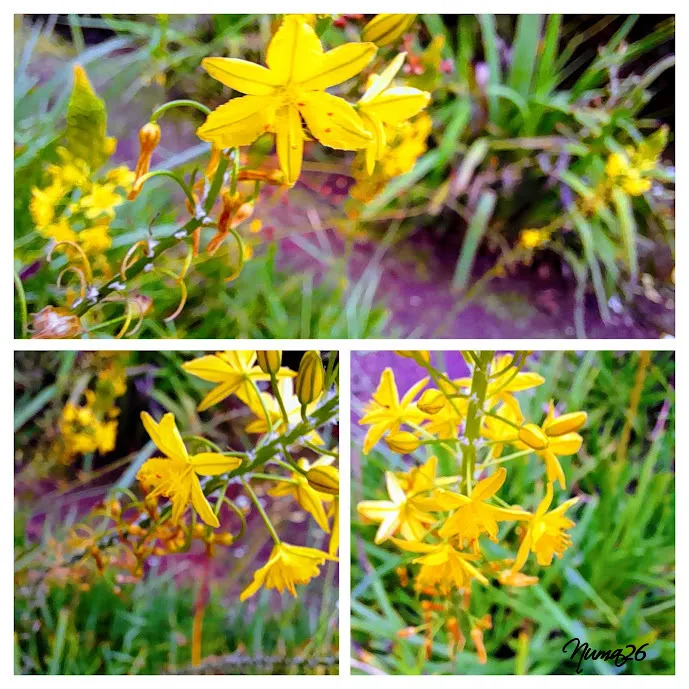
Con estos dos ejemplares de flores, La Bulbina Bulbosa y la Bulbine Frutescens,
me quedé impresionada por esa espectacular belleza que invita a la fotografía. Con esos colores tan potentes a los ojos del humano, que no hallaba por cuál decidirme para esta publicación. Había muchas, y todas lindas. Aún no habían terminado su floración, pero tenía unas cuantas florecitas abiertas. Su forma de estrellas es de locura, con esos colores que alucinan. Chiquitas y hermosas. Ambas son de la misma familia. Estas plantas son un imán para los insectos, por el colorido. Es de fácil mantenimiento. Sus hojas son suculentas. La floración es muy larga, de primavera a otoño e incluso en invierno si este es muy suave. Tanto la Bulbina Bulbosa amarilla, como la Bulbine Frutescens, color naranja ocre, poseen las mismas características en general. La diferencia sería sus colores y la fortaleza del bulbo y el tallo.
With these two specimens of flowers, Bulbina Bulbosa and Bulbine Frutescens,
I was impressed by this spectacular beauty that invites photography. With such powerful colors to the human eye, I couldn't decide which one to choose for this publication. There were so many, and they were all beautiful. They had not yet finished flowering, but I had a few little flowers open. Their star shape is crazy, with those mind-blowing colors. Tiny and beautiful. Both are from the same family. These plants are an insect magnet, because of the coloring. They are easy to maintain. Its leaves are succulent. The flowering is very long, from spring to autumn and even in winter if it is very mild. Both the yellow Bulbina Bulbosa and the orange-ochre Bulbine Frutescens have the same general characteristics. The difference would be their colors and the strength of the bulb and stem.
Taxonomía
- Kingdom: Plantae
- Order: Asparagales
- Family: Asphodelaceae
- Subfamily: Asphodeloideae
- Genus: Bulbina
- Species: Bulbina. Bulbosa
- Binomial name: bulbina bulbos.a
- Species: Bulbina bulbosa
Taxonomía
- Reino: Plantae
- División: Magnoliophyta
- Clase: Liliopsida
- Subclase: Liliidae
- Orden: Asparagales
- Familia: Xanthorrhoeaceae
- Subfamilia: Asphodeloideae
- Género: Bulbine
- Especie: Bulbine. frutescens







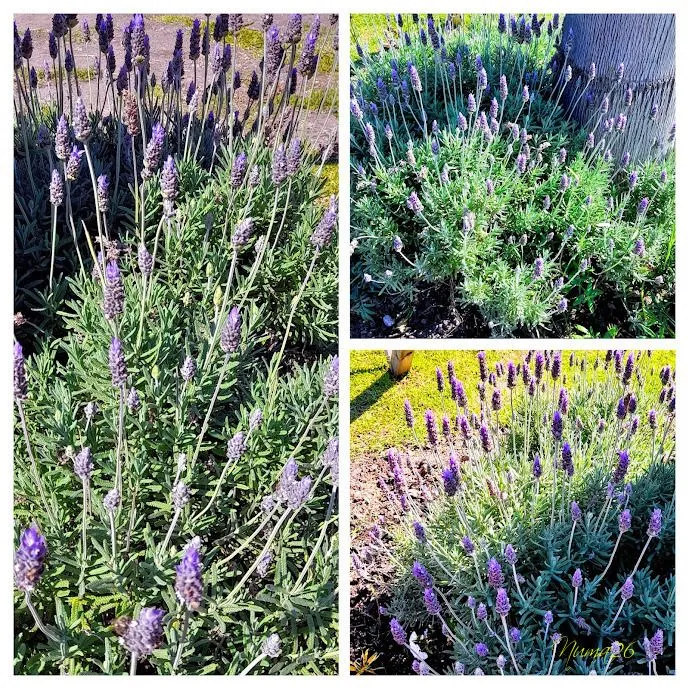
Al conocer esta planta y sus flores, he corroborado lo que todo el mundo comenta, por sus características tan peculiares. Ella deprende un aroma, tan solo con pasar a su lado. Es único. Sus flores de color violáceo, producen mucho nectar y por ello, tienen visita frecuente de abejas, abejorros, colibríes, etc. Ese aroma y color hace que la busques para saber donde se encuentra. Ella se delata. Es un arbusto, pero también la pueden cultivar en macetas No requiere de muchos cuidados. Ella es tan noble, que hasta crece en lugares rocosos.
Knowing this plant and its flowers, I have corroborated what everyone says, because of its peculiar characteristics. It gives off an aroma, just by passing by its side. It is unique. Its purplish flowers produce a lot of nectar and therefore are frequently visited by bees, bumblebees, hummingbirds, etc.. That aroma and color makes you look for it to know where it is. It gives itself away. It is a shrub, but can also be grown in pots. It does not require much care. It is so noble that it even grows in rocky places.
Taxonomía
- Reino: Plantae
- División: Magnoliophyta
- Clase: Magnoliopsida
- Orden: Lamiales
- Familia: Lamiaceae
- Subfamilia: Nepetoideae
- Tribu: Lavanduleae
- Género: Lavandula
Taxonomy
- Kingdom: Plantae
- Division: Magnoliophyta
- Class: Magnoliopsida
- Order: Lamiales
- Family: Lamiaceae
- Subfamily: Nepetoideae
- Tribe: Lavanduleae
- Genus: Lavandul



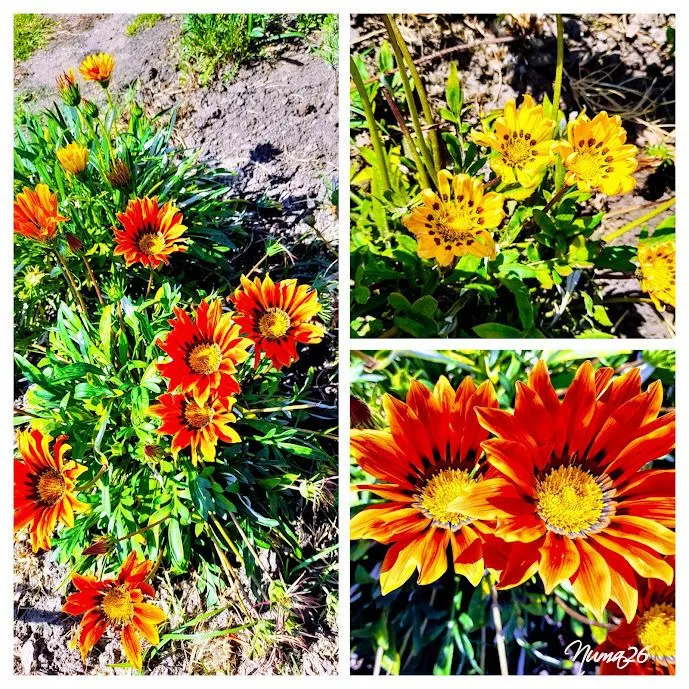
Esta hermosa flor, cuyo nombre es Gazania, está justo en el parque que frecuento a diario. Este y otros ejemplares, son las encargadas de brindar belleza a todo el espacio verde, creado para tal fin. En mi hogar, desde que la conocí siendo muy niña, la llaman Yerbera Las hay de muchísimos colores, amarillas, rosadas, blancas, etc. Realmente cuando las observas de cerca, seguro que te hipnotiza de tanta belleza. Yo no pude contener las ganas de transformarla en mi modelo natural. Logré varias capturas, y seleccioné las anteriores y la que está en la portada, ellas se ganaron ese lugar preponderante, por ser tan exuberantes.
La Gazania, llega a medir unos 25 cm de alto, es de origen africano, pero la pueden conseguir en cualquier parte del mundo, por su característica herbácea. Especie muy fiel, pues es capaz de soportar los climas calurosos, y su floración puede durar casi todo el año, con los cuidados que ella requiere, como riego frecuente en verano, y tener cuidado de no regar con abundante agua, pues podría morir. Tienen la particularidad de que sus flores se cierran de noche, y abren con el resplandor del sol.
This beautiful flower, whose name is Gazania, is right in the park I visit every day. This and other specimens, are responsible for providing beauty to the entire green space, created for this purpose. In my home, since I met them as a child, they are called Yerbera. They come in many colors, yellow, pink, white, etc. Really, when you look at them closely, you are sure to be mesmerized by such beauty. I could not contain the desire to transform it into my natural model. I managed to get several captures, and I selected the previous ones and the one on the cover, they earned that prominent place, for being so exuberant.
The Gazania, reaches about 25 cm high, is of African origin, but you can get it anywhere in the world, for its herbaceous characteristic. It is a very faithful species, because it is able to withstand hot climates, and its flowering can last almost all year, with the care it requires, such as frequent watering in summer, and be careful not to water with abundant water, because it could die. They have the particularity that their flowers close at night, and open with the brightness of the sun.
- Clasificación superior: Gazania
- Orden: Asterales
- Categoría: Especie
- Especie: Gazania rigens; (L.) Gaertn.
- Familia: Asteraceae
- Reino: Plantae
- Higher taxonomy: Gazania
- Order: Asterales
- Category: Species
- Species: Gazania rigens; (L.) Gaertn.
- Family: Asterac
- Kingdom: Plantae



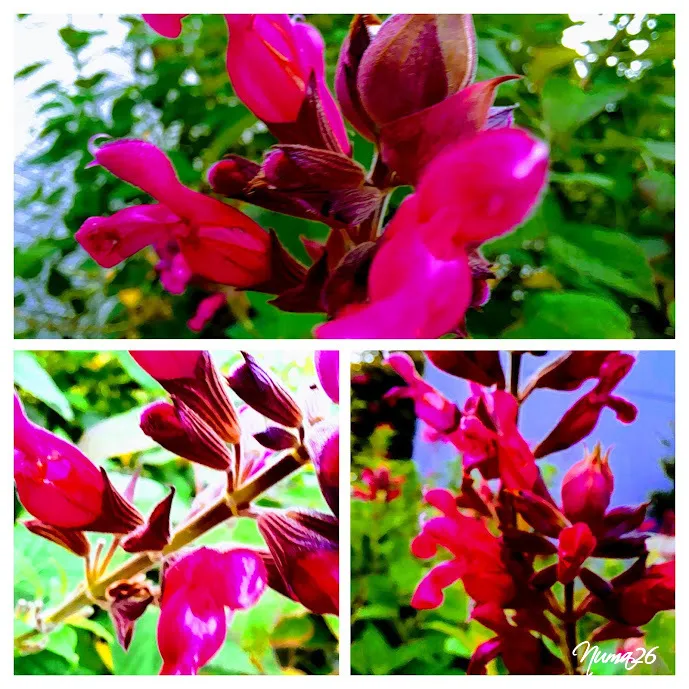
Esta hermosura de florecitas, me conquistó al encontrarlas a mi paso, por ese color fucsia y delicado aroma afrutado que se desprende de sus hojas con apenas el roce de una suave brisa. La Salvia Dorisiana, hasta tiene propiedades medicinales. El nombre Salvia proviene del latín salvus, que significa "salud "y "curar". Esta planta mide aproximadamente entre 1 a 1.3 m de altura. Sus flores son hermafroditas y miden hasta 5 cm de longitud. En fin, estas son algunas características que pude corroborar con mi ejemplar, pues viví e hice un recorrido visual por esta singular planta. Así mismo, al investigar, se dice que ella es utilizada para preparación de recetas, pues son de un sabor potente. Recuerdo que mi abuelita usaba las hojas de la salvia, para prepararnos infusiones cuando teníamos problemas estomacales, o algún desarreglo con la menstruación. Así que mi bella flor se convirtió en un excelente auxiliar para la salud y la gastronomía.
This beautiful little flowers, conquered me when I found them in my path, for that fuchsia color and delicate fruity aroma that comes from its leaves with just the touch of a gentle breeze. Salvia Dorisiana even has medicinal properties. The name Salvia comes from the Latin salvus, which means "health" and "cure". This plant measures approximately 1 to 1.3 m in height. Its flowers are hermaphrodite and measure up to 5 cm in length. Anyway, these are some characteristics that I could corroborate with my specimen, because I lived and made a visual tour of this unique plant. Also, upon investigating, it is said that it is used for the preparation of recipes, as they have a powerful flavor. I remember that my grandmother used the sage leaves to prepare infusions when we had stomach problems or menstruation disorders. So my beautiful flower became an excellent auxiliary for health and gastronomy.
- Nombre Científico:Salvia dorisiana Standl
- Reino: Plantae
- Subreino:Tracheobionta
- División:Magnoliophyta
- Clase: Magnoliopsida
- Subclase:Asteridae
- Orden: Lamiales
- Familia:Lamiaceae
- Tribu: Mentheae
- Género: Salvia
- Especie:S. Dorisiana
- Hábitat:Es originaria de Honduras
- Taxonomy.
- Scientific Name: Salvia dorisiana Standl.
- Kingdom: Plantae
- Subkingdom:Tracheobionta
- Division:Magnoliophyta
- Class: Magnoliopsida
- Subclass:Asteridae
- Order: Lamiales
- Family:Lamiaceae
- Tribe: Mentheae
- Genus: Salvia
- Species: S. Dorisiana
- Habitat: It is native to Honduras.

Cool Text: Logo and Graphics Generator
Traductor
Editor
Fotografías capturadas con mi Samsung A-12
Fuentes bibliográficas1,2, 3,4,5
